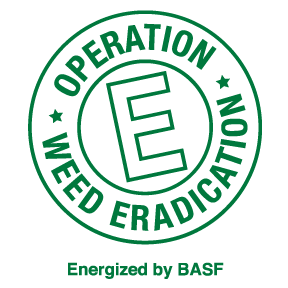Planning your seed trait & chemical program for the 2022 growing season
Pigweed species like Palmer amaranth and waterhemp have proven to be challenging to manage but layering effective residual herbicides can be an effective strategy that could provide season-long control. Adding residual herbicides to your weed control program can have a profitable impact on your bottom line.

Now that the 2021 growing season is drawing to a close, it’s the perfect time to reflect on the season and take advantage of everything you experienced in the field this year—good or bad. Here are a few important questions to ask yourself:
- “Could I leverage different herbicide modes of action via crop rotation (i.e., move from cotton to corn) or through a different trait platform (i.e., try Enlist E3 soybeans for the first time)?
“How did my program perform in fields where I have hard-to-control / resistant weeds?”
“How did my postemergence weed control program perform? How could it improve?”
“How did my preemergence weed control program perform? How could it improve?
Let’s think about this last question, a bit more in depth. It’s no secret the effectiveness a pre-emergence herbicide application can have on an operation’s success. It’s a key step towards starting the year off right and giving your crop an advantage over weeds. Perhaps one area you’ve not considered is the use of residual herbicides, not only in pre-emergence, but also in post-emergence herbicide applications. Hard-to-control weeds like waterhemp offer unique challenges to even the best weed control program strategy. So, what’s a grower to do?
WATERHEMP CAN GERMINATE THROUGHOUT THE GROWING SEASON
Achieving season-long control of waterhemp is difficult for many reasons, one of them being it has a longer period of time during which it can emerge compared to other summer annual weeds. In addition, waterhemp tends to germinate later in the growing season than other summer annual weeds, like common ragweed and common lambsquarters.
Waterhemp plants have the potential to produce hundreds of thousands of seeds, which drives home the need for layering residuals. The concept of layering residuals is to ensure that as one residual is fading in effectiveness, the next one is activated and providing weed control.
LAYERING RESIDUAL HERBICIDES HAS MANY BENEFITS
Researchers at the University of Minnesota demonstrated that applying residual herbicides at pre-emergence and post-emergence application timings in soybeans is an effective way to control glyphosate-resistant weeds all season long. They also indicated that it can be a path towards increased crop yield.
The study compared the efficacy of three different group-15 herbicides utilized for their effectiveness in controlling waterhemp, used in a single pre-emergence application versus a two-pass layered approach. The results of the study found that a second, or layered application, extended the duration of seedling control to cover waterhemp’s extended emergence period. By the time October rolled around, waterhemp control was 90 to 95% control in the layered approach versus 62 to 81% in the single pass system.
Furthermore, the lower level of weed control in the single-pass system translated to lower soybean yield compared to the layered approach. Across the three group-15 herbicides used in the trial, the layered residual treatments provided an average yield advantage of 10 bushels per acre over the single pass system1.
ADD RESIDUAL HERBICIDES TO YOUR PLAN OF WATERHEMP ERADICATION
No doubt waterhemp is a challenging weed to manage, but layering effective residual herbicides is an effective strategy that could provide season-long control. Adding residual herbicides can provide a clear advantage to your weed control program--and your bottom line.
There are many residual herbicides available for consideration. Incorporating pre-residual herbicides such as BASF’s Zidua® PRO Herbicide and Zidua® SC Herbicide, for instance, can help start the season with clean fields. Incorporating a post-residual herbicide helps suppress late emergent weeds through canopy. BASF’s Outlook Herbicide activates with 1/4” rainfall so you can be confident in residual activation during periods of low rainfall.
Next season, show palmer amaranth and waterhemp who’s boss. Plan to put residuals in the tank at both pre-emergence and post-emergence applications for maximum pigweed control.
Zidua and Outlook are registered trademarks of BASF.
1 2015 University of Minnesota, “Managing waterhemp with layered residual herbicides”
